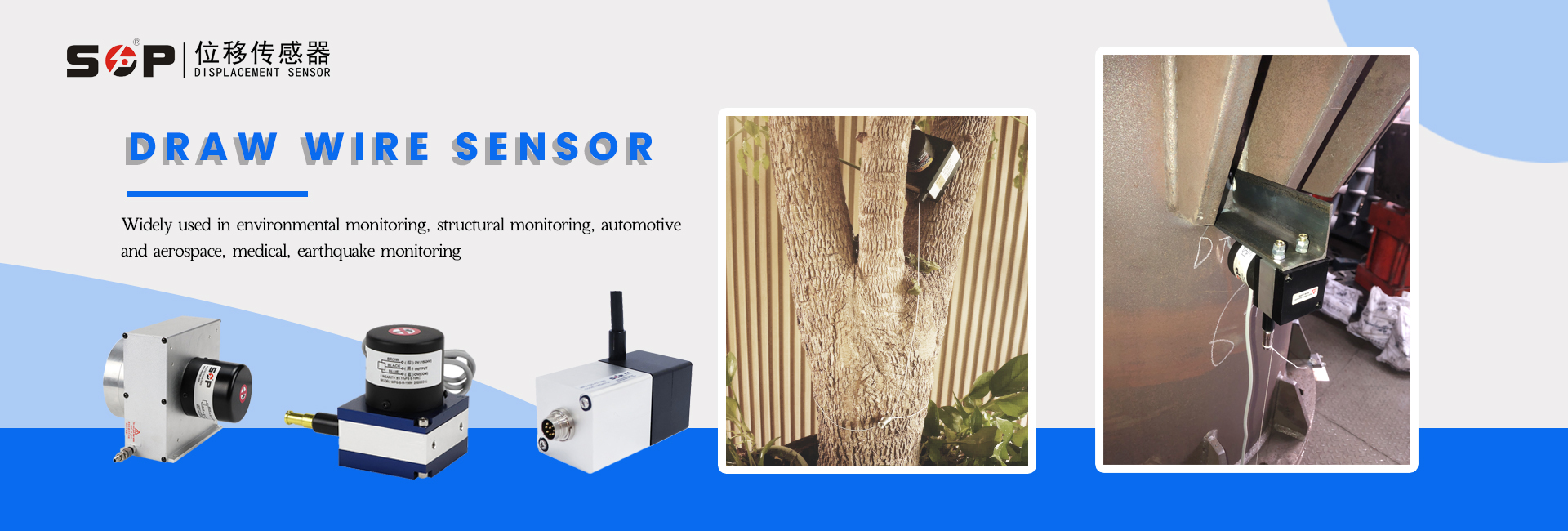Application of Draw Wire Sensor in Measuring Tree Growth
Application of Draw Wire Sensor in Measuring Tree Growth
As an important carrier of carbon storage, the growth of trees is of great significance for ecological protection, resource management, and climate change response. However, traditional manual detection methods usually require a lot of time, especially in areas with large forests or dense trees, which are inefficient and unable to achieve real-time monitoring. Manual testing not only requires regular inspections, but may also miss key growth changes and require a large number of staff, thereby increasing labor costs and management expenses.
In this case, using a draw wire sensor for tree growth detection can significantly improve detection efficiency and real-time performance. Draw wire sensors can provide high-precision, real-time data, reduce reliance on manual detection, lower labor costs, and improve the accuracy of growth monitoring. This technology is particularly suitable for smart forest farms. Through intelligent management systems, it can achieve comprehensive monitoring and precise management of forest resources, improve overall operational efficiency, and assist in ecological protection and climate change response.
So, how can we use draw wire sensors to measure tree growth?
Pulling rope displacement sensor is a precision measuring tool that obtains data by connecting to the measured object and monitoring displacement changes in real time. When measuring tree diameter, we can fix the rope to the trunk and monitor the circumference changes of the trunk in real time through sensors. Based on the data measured by the sensor, we can calculate the diameter of the tree trunk through simple mathematical calculations. By continuously monitoring the diameter changes of tree trunks, we can understand the impact of the growth rate, cycle, and growth environment on the growth status of trees.
Components of the rope displacement sensor speed measurement growth module
1. Sensor body: A sturdy casing typically made of durable materials to protect internal electronic components.
2. Sensor interface: used to connect the output signal of the cable sensor to ensure that the data can be collected correctly.
3. Wireless communication module: Transmit real-time tree diameter data collected by sensors to remote devices or cloud platforms through wireless signals, allowing users to obtain data without having to be on-site
4. Power management module: Provides the necessary power for wireless modules and sensors, which may include batteries, voltage regulators, etc.
The comparative advantages of digital measurement and traditional manual measurement of rope displacement sensors
High precision: Rope sensors can provide high-precision digital measurement results, while traditional manual measurements are often affected by human factors and have large errors
Real time performance: The rope sensor can monitor displacement changes in real time and output data in real-time, suitable for situations that require dynamic detection; Traditional manual measurements usually require a long time to record and calculate.
Automation: Digital measurement can be integrated with automation systems to achieve automatic data collection and processing, reduce manual intervention, and improve efficiency; However, manual measurement often requires manual recording, which is less efficient.
Reducing human errors: Through digital measurement, measurement errors caused by operational errors can be greatly reduced, ensuring the reliability of measurement data.
Adapting to complex environments: Rope sensors can measure in some dangerous or complex environments, reducing personnel risks, while manual measurements may not be safe in these environments.
Continuous monitoring: Digital measurement can achieve long-term continuous monitoring, suitable for situations that require long-term recording of changes, while manual measurement is usually fixed at a certain point in time.
Rope displacement sensors can play an important role in various fields, including environmental monitoring, structural monitoring, automotive and aerospace, medical, earthquake monitoring, as well as robotics and automation equipment, helping to meet monitoring, control, and automation needs. The use of SOP rope displacement sensors can replace manual detection of tree growth, improve monitoring efficiency, accuracy, and sustainability, and benefit scientific research and forest management.


